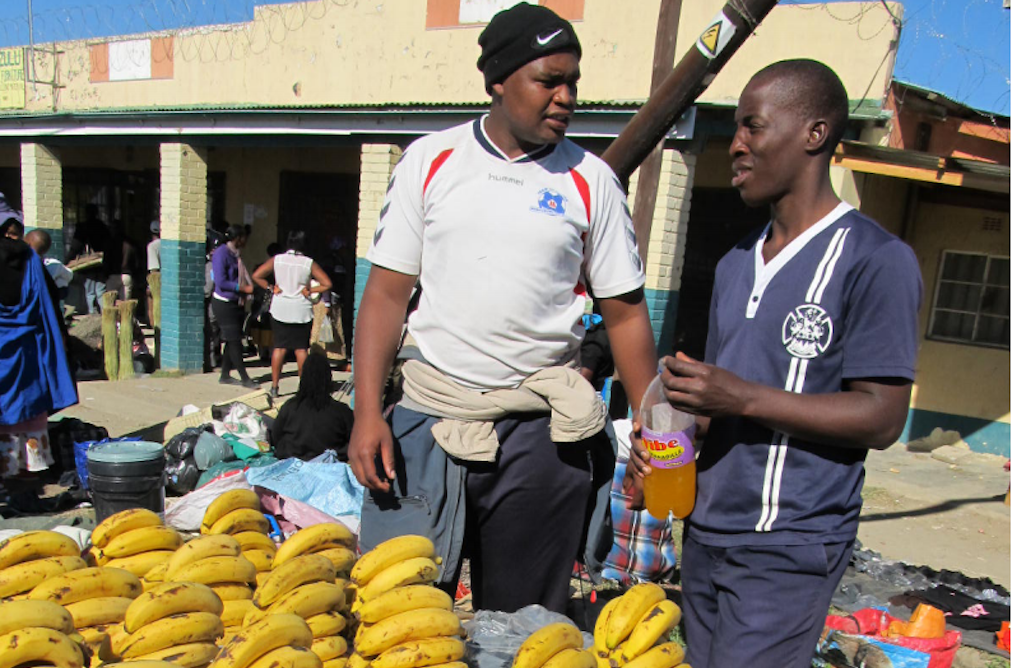South Africa has very high unemployment levels. Part of the reason for this is that there has been a disconnect between the growth in employment and the growth in the labour force, that is people who are working or looking for jobs. Although growth in employment has kept pace with growth in the working-age population, it has not kept pace with growth in the labour force. Unemployment has therefore increased both in absolute terms and as a proportion of the labour force.
The disconnect between the growth in employment and growth in the labour force emphasises the importance of understanding the long-term challenges and opportunities associated with demographic change.
A country achieves a demographic transition when it shifts from a high-fertility, high-mortality equilibrium to a low-fertility, low-mortality equilibrium. It is then associated with two potential dividends which contribute to long-term economic growth and development.
The first demographic dividend is triggered by falling fertility rates after a decline in mortality rates, particularly among children. The second can be realised through capital deepening.
South Africa is in the midst of a demographic transition. Projections from the United Nations Population Prospects suggest that the share of the working-age population in South Africa will remain between 65% and 67% until 2030. Given the slow population growth, this means that the working-age population is expected to increase from 34.2 million to 36.5 million by 2030.
The median age in South Africa has risen from 18 years to 25 years over the past three decades. It is estimated to rise to 31 over the next three decades as the population continues to age.
The magnitude of South Africa’s demographic dividend is in line with that of other middle-income countries. But estimates of the first demographic dividend show that South Africa has passed through at least half of the period in which it is expected to be positive. It is now in the stage during which the magnitude of the dividend is falling.
The two demographic dividends
Falling fertility rates help to boost economic growth through lowering the level of dependency on working-age adults.
Typically dependency is measured in terms of dependency ratios, namely the ratio of economically inactive cohorts to economically active cohorts. For example, the total dependency ratio is the ratio of children under the age of 15 and adults aged 65 years and older, to the working-age population. But this implies an instantaneous shift from dependence to non-dependence at age 15 and back again at age 65, which is not realistic. Instead it is more useful to calculate the support ratio. This measures the number of effective workers compared with the number of effective consumers. A rise in the support ratio means a lower level of dependence.
Declining fertility leads to a reduction in the number of dependent children compared with nondependent adults. It is the underlying driver of the demographic dividend because it drives the support ratio higher. This raised support ratio also means that, all things being equal, income per effective consumer rises. This in turn implies higher standards of living and an improved scope for human capital investment.
Following this, the second demographic dividend can be realised through capital deepening. But for this to happen the benefits of the first dividend must be invested in human, physical and financial capital.
For South Africa, the average fertility rate has already declined from 6.4 births in the 1950s to 2.4 births in 2005 to 2010. But high levels of unemployment and the low income levels have constrained the economy’s ability to reap the benefits.
The effects of income and consumption
In addition to demographic change, both income and consumption at each age influence the rate of change of the support ratio, and the magnitude of the demographic dividend.
South Africa differs in some marked ways when compared with the income and consumption profiles of 33 other countries.
Income begins to rise at a later age and is lower relative to peak income than among young people in other countries. In addition, per capita income falls significantly for older working-aged adults.
South Africa’s consumption pattern also differs significantly. For older people there is a decline in consumption compared with other countries.
This points to weaknesses in the institutions that should allocate resources to ensure that consumption among the elderly is maintained at a level that is comparable with that of working-age people.
South Africa’s challenges
South Africa is at a relatively advanced point within the demographic transition. The youngest cohorts within the working-age population are expected to stabilise in size and begin to contract. At the same time the number of older working-age people – who would comprise a large proportion of effective consumers – is expected to grow rapidly.
To realise the benefit of the final phase of the demographic dividend, the South African economy needs to grow employment and improve the labour market prospects for younger working-age people. Greater employment will raise mean incomes, allowing South Africans to invest in education and save. These actions are crucial for achieving the second demographic dividend.
The evidence confirms that inequality in consumption across age in South Africa is limiting the size of the demographic dividend. This suggests that weak sharing mechanisms in the country may have a negative impact on per capita income growth over time. In some sense, this provides support for the argument that inequality can act as a brake on economic growth.
This article is based on a working paper prepared as part of the UNU-WIDER project on macroeconomic management, a collaboration with the Brookings Institution and the Development Policy Research Unit (DPRU) at the University of Cape Town on Understanding the African Lions: Growth Traps and Opportunities in Six Dominant African Economies.







Comments on this article are now closed.